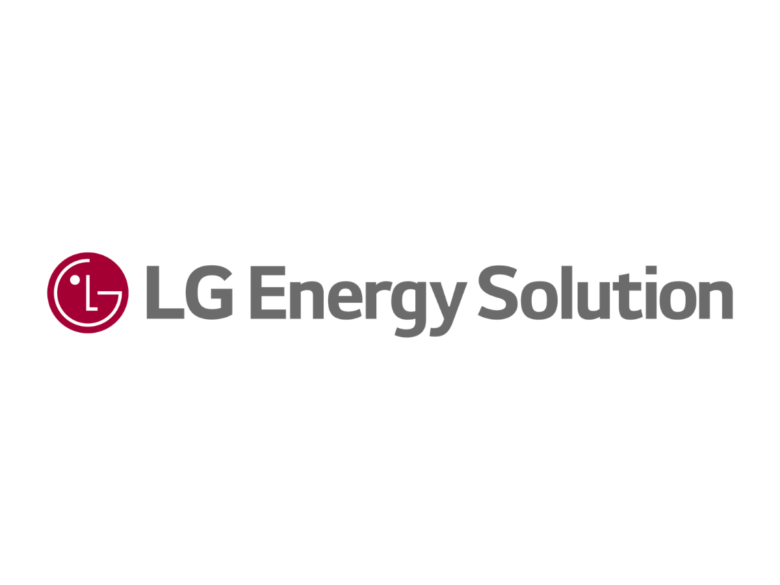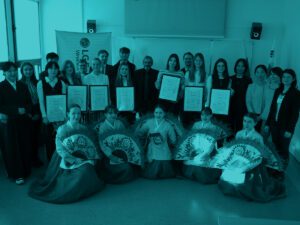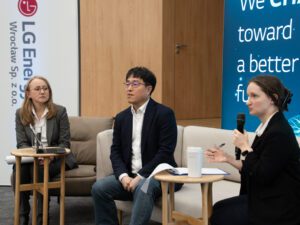- LG Energy Solution posts KRW 6.3 trillion in consolidated revenue and KRW 375 billion in operating profit in Q1 2025
- Company returns to profitability through rigorous cost-cutting efforts
- Company to focus on operational efficiency, cost reduction, and strategic business opportunities to cope with impacts from regulatory transitions this year
SEOUL, April 30, 2025 – LG Energy Solution (KRX: 373220) today announced its first-quarter earnings for 2025, turning a profit through rigorous cost-cutting efforts.
The company posted consolidated revenue of KRW 6.3 trillion, a 2.9 percent decrease quarter-on-quarter and 2.2 percent increase year-on-year. The operating profit was KRW 375 billion with an EBITDA margin of 20 percent, marking a turn around to profitability. The operating profit includes the IRA tax credit amount of KRW 458 billion.
In the first quarter, we demonstrated solid shipments to North America and for newly launched EV models. However, as automakers continued their conservative approach to inventory management, our quarterly revenue declined compared to the last quarter. Nevertheless, we successfully returned to profitability in the first quarter as our efforts to reduce material costs and enhance cost efficiency came to fruition, with one-off items reflected in the previous quarter no longer playing base effect into Q1 profit.
Chang Sil Lee, CFO of LG Energy Solution
In the first quarter, LG Energy Solution reallocated its production capacity in North America to better respond to market demands and address ongoing uncertainties. Namely, the company put the construction of its ESS battery plant in Arizona on hold and instead decided to first utilize the existing production capacity at its plant in Michigan, aiming to start producing LFP (lithium, iron, phosphate) batteries for ESS this year, a year earlier than planned.
Also, the company is in the process of acquiring the GM JV phase 3 in Michigan, which would significantly expand its footprint in North America. This move will also maximize the utilization of investments already undertaken by minimizing the facility’s downtime.
Alongside this strategic adjustment, LG Energy Solution continued to make notable achievements in both EV and ESS businesses based on its strong product competitiveness. The company successfully expanded its customer portfolio for 46-Series cylindrical batteries to legacy automakers by securing a new 10GWh (annual) order from an established automaker in North America. It also won contracts from Polska Grupa Energetyczna (PGE) for grid-scale ESS batteries in Europe and Delta Electronics for residential ESS batteries (4GWh) in the U.S. The company also ventured into new applications, including solar EVs and offshore wind farms, as well as establishing its first European battery recycling joint venture facility with Derichebourg in France, which will establish 20,000 tons of annual preprocessing capacity to meet the EU’s battery recycling regulations and secure a metal supply chain.
Moving forward, as regulatory transitions such as U.S. tariffs and the EU’s industrial action plan for the automotive sector are expected to affect the battery industry broadly, LG Energy Solution will concentrate on streamlining operations and reducing costs this year, while actively pursuing strategic business opportunities.
It will focus on indispensable investments and proactively adjust the scale and speed of capacity expansion in response to changing market demands. It will also take a cautious approach to managing inventory for EV batteries, while accelerating the revenue expansion in its ESS business, which holds relatively higher growth potential.
At the same time, LG Energy Solution will continue to cultivate strategic business opportunities by continuing to secure future demands from its key customers with new products, including 46-Series cylindrical batteries. Simultaneously, it will proactively discover new applications for its cylindrical batteries, such as humanoid robots and drones.
To mitigate the impact of tariffs, the company will promote the local production of raw materials by collaborating with material companies entering North America. It will also accelerate the development and adoption of new technologies, such as dry electrodes, to lower production costs.





